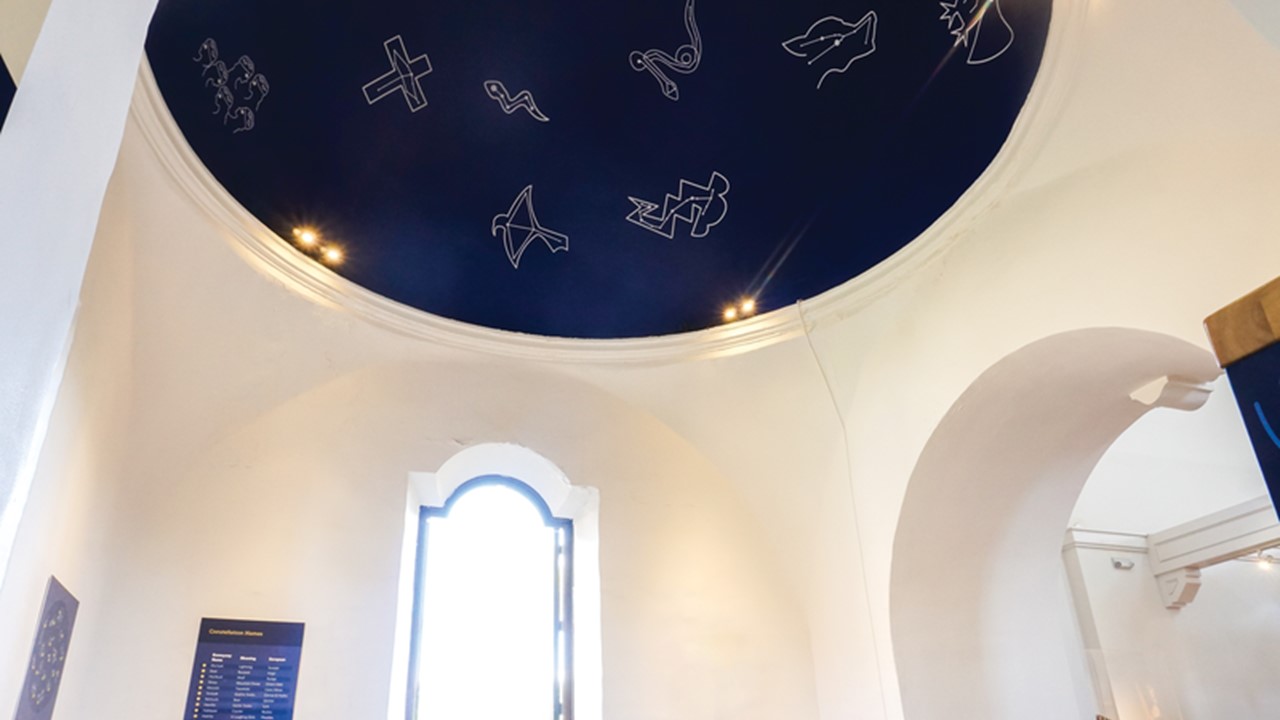
This article originally appeared in the July/August 2019 issue of Museum magazine, a benefit of AAM membership.
Through a decolonizing collections practice, the San Diego Museum of Man is creating a more ethical standard for the Indigenous remains and cultural resources it holds.
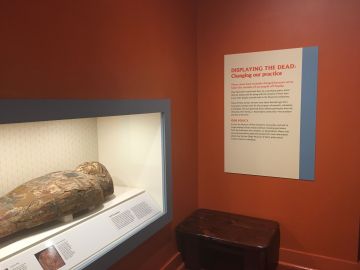
The San Diego Museum of Man (SDMoM) is situated within the Kumeyaay Nation, the homeland of the Kumeyaay people. We extend our respect and gratitude to the many Indigenous peoples who still reside here and call these lands home.
SDMoM’s mission is to inspire human connections by exploring the human experience. Today we recognize that this can only authentically occur in a context of truthfulness and transparency about the ways that our museum participated in the colonial enterprise. For the greater part of our history, we harmed Indigenous communities by participating in the extraction of their belongings, cultural practices, and bodies in service to the museum’s goals of preservation and education.
Moving beyond our legacies as colonial institutions requires a reexamination of the ethics of collecting, stewardship, and holding of Indigenous tangible and intangible culture and ancestral remains. The law establishes minimum standards; museums also need an ethical standard to meet their obligations for providing true value to society.
Our History
When we began the critical examination of our institution, we immediately found that the museum had acquired the bodies and belongings of Indigenous people, in the United States and globally, in ways that were legal but not just or equitable.
A surface-level examination of SDMoM’s acquisition ledgers shows hundreds of legal donations and purchases over a century that filled our storage rooms with tens of thousands of heritage items. However, a close examination of these transactions reveals a more complex story. Here are two examples among thousands that have their equivalents in museums around the world:
- A collection of Apache items donated by local San Diegans in the 1950s were originally collected by US military personnel stationed on the San Carlos Apache Reservation in Arizona during theApache Wars, a period of violent conflict between the US government and the Apache people that resulted in the forced relocation of the Apache people.
- Another group of items were procured by members of the Stanley Porteus expeditions in Australia. Porteus studied Aboriginal Australian communities in order to bolster his white supremacist racial theories.
For a vast majority of our acquisitions, the transactions that caused belongings to leave Indigenous communities are often obscured by a lack of transparent or available documentation in our records. By simply labeling displayed items with a donor or purchase acknowledgment, the museum effectively erased the genocide, warfare, displacement, and oppression perpetrated against Indigenous communities.
Furthermore, by rarely including Indigenous voices in decisions made about the presentation of their ancestors and belongings, our institution perpetuated the ongoing colonization and appropriation of Indigenous cultures.
Faced with the truth about our museum’s role in the ongoing colonial oppression of Indigenous communities, we began the process of decolonizing our institutional practices. In line with Ho-Chunk scholar Amy Lonetree’s work in her seminal book Decolonizing Museums, SDMoM aims to do three things: include Indigenous decision-making at all levels of the organization; truthfully address the histories and legacies of colonization in its policies, practices, exhibits, and programs; and present the work of Indigenous scholars, traditional knowledge holders, and creatives.
Why Existing Laws Aren’t Enough
At SDMoM, we began our decolonizing process by addressing internal policies and practices so that our outward-facing initiatives would be built on a foundation of deep institutional commitment to change. We had all worked in museums where outward-facing partnerships with Indigenous entities (usually in the form of exhibitions or educational and public programs) masked internal colonized structures and power disparities. True partnering, in our view, requires balanced power.
We recognize that perhaps the greatest imbalance in museum/Indigenous relationships is caused by museums’ claim of ownership over ancestral bodies and belongings. And so we began with the policies related to collections, what we now call cultural resources (in recognition of their true value: as resources for Indigenous cultural continuity and not as collectors’ possessions).
The Native American Graves Protection and Repatriation Act (NAGPRA) became US law in 1990 to redress the injustice museums and universities perpetrated when they extracted bodies and sacred belongings from some Native American communities. Other international conventions passed in the past century curtail or forbid the extraction of Indigenous bodies and belongings without consent in this era.
However, NAGPRA applies only to ancestral remains, funerary objects, sacred items, and items of cultural patrimony from federally recognized tribes within the United States. Other international conventions do not require that current standards be retroactively applied, as is the case with conventions governing the import and export of certain archaeological and cultural items.
Furthermore, implementation of NAGPRA legislation places decision-making authority for repatriation with the collecting institution rather than with Indigenous communities. Standards of evidence required for the return of ancestral bodies or cultural items are often insurmountable for source communities, and the legislation does not provide adequate recourse for communities seeking the return of their belongings.
SDMoM, like most other museums that hold Indigenous items, had long prevented the return of ancestral remains and cultural resources to Indigenous communities. We complied with the letter of NAGPRA and benefitted from both the procedural disparity written into that law and the limited number of communities with which we were compelled to consult.
For the museum to shift from reluctant, minimal compliance with laws that were seen as a threat to the institution (a 1997 SDMoM SWOT analysis named repatriation as a literal threat), we needed internal policies and procedures that prioritize Indigenous community needs.
Creating Our Own Policies
In 2017 and 2018, the museum passed two policies: one on curating ancestor remains and the other our Colonial Pathways Policy. Together, these two policies provide a process for all Indigenous descendant communities to consult with the museum and find a pathway home for their ancestors and belongings, either through NAGPRA implementation that complies with the spirit and letter of that law or through deaccession and transfer.
We built these policies on the prior work of our colleagues at New Zealand’s Te Papa Tongarewa, the Denver Museum of Nature & Science, the Abbe Museum in Maine, and others. The legally compliant and ethically mandated standard we are applying at SDMoM provides continuing consent for stewarding Indigenous bodies and belongings. This means that the museum must have documented agreements with Indigenous communities regarding our ability to hold and/or display their tangible and intangible culture and their ancestors’ remains. It also means respecting Indigenous knowledge and authority in naming and defining their ancestors and cultural heritage items.
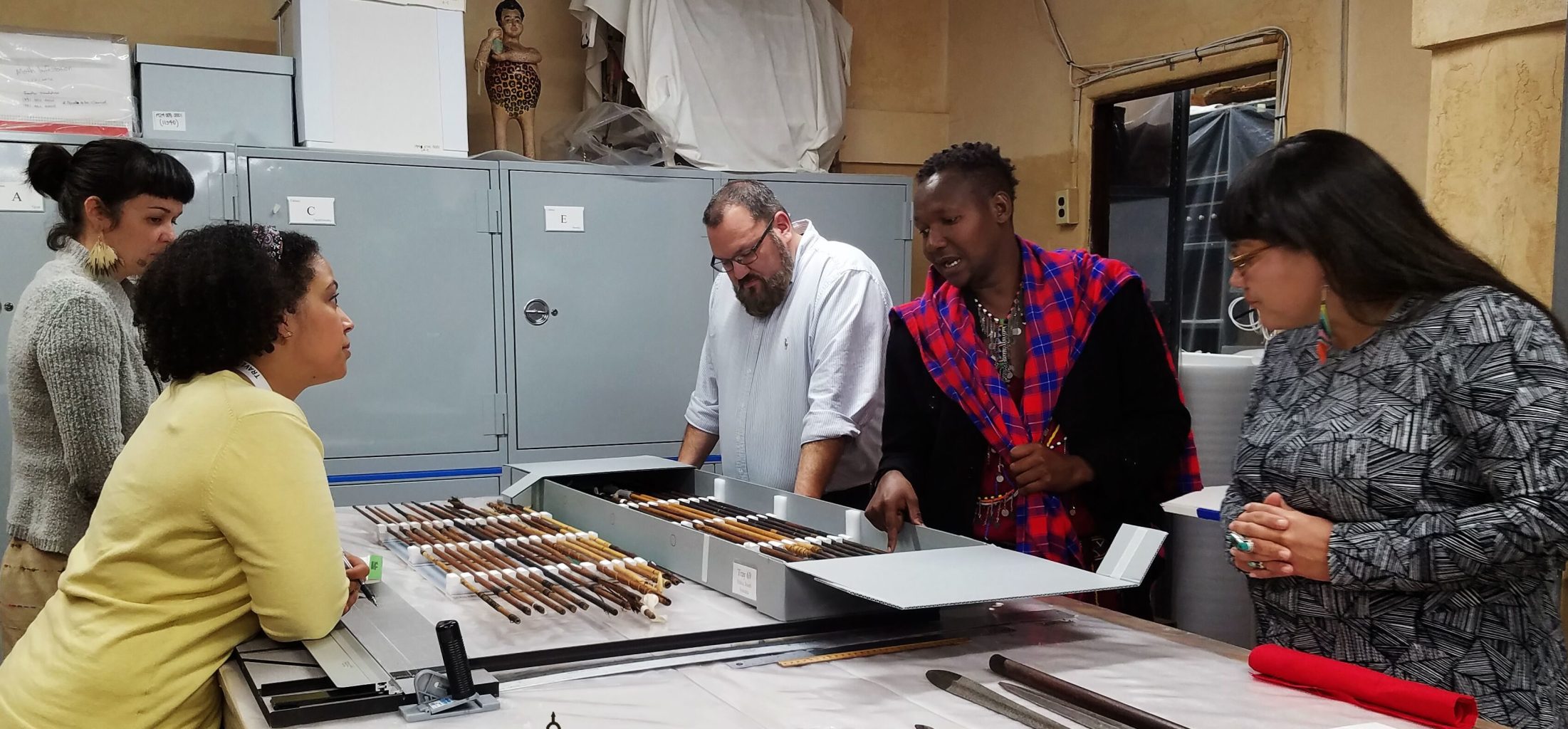
For many years, museums have set the bar for approving the return of Indigenous belongings or ancestors to Indigenous communities. In many instances, museums believed they were qualified to determine whether a community need was legitimate. Decolonization requires dominant culture institutions like SDMoM to let go of their presumed decision-making authority and recognize the authority of Indigenous communities. In practice, this means recognizing the validity of Indigenous definitions of ownership, acknowledging Western secularization of sacred items, and accepting traditions of continuity between Indigenous peoples past and present.
Our decolonization policies recognize Indigenous sovereignty and the legitimacy of Indigenous knowledge and shared narratives, whether documented or passed through oral traditions. We acknowledge and believe that Indigenous knowledge is the most reliable evidence when defining the importance of cultural resources to an Indigenous community. Prioritizing Indigenous knowledge and decisions allow us to begin to correct the harm non-Indigenous authorities created by disregarding the expertise of Indigenous communities.
What Now?
Implementing these policies will be our work for the next several decades. We will need to consult with descendant communities on about 80 percent of the museum’s approximately 75,000 ethnographic items and archival and audio-visual material, as well as all the archaeology from more than 1,000 sites. We are a midsized museum with an operating budget of about $4 million and about 40 full-time and 20 part-time staff. Given our capacity, this work will take time.
We are beginning with our homeland community and prioritizing the work that still needs to be done under NAGPRA with US tribes. We are currently writing the procedures that underlie these policies, as the issues around domestic and international consultation, are complex.
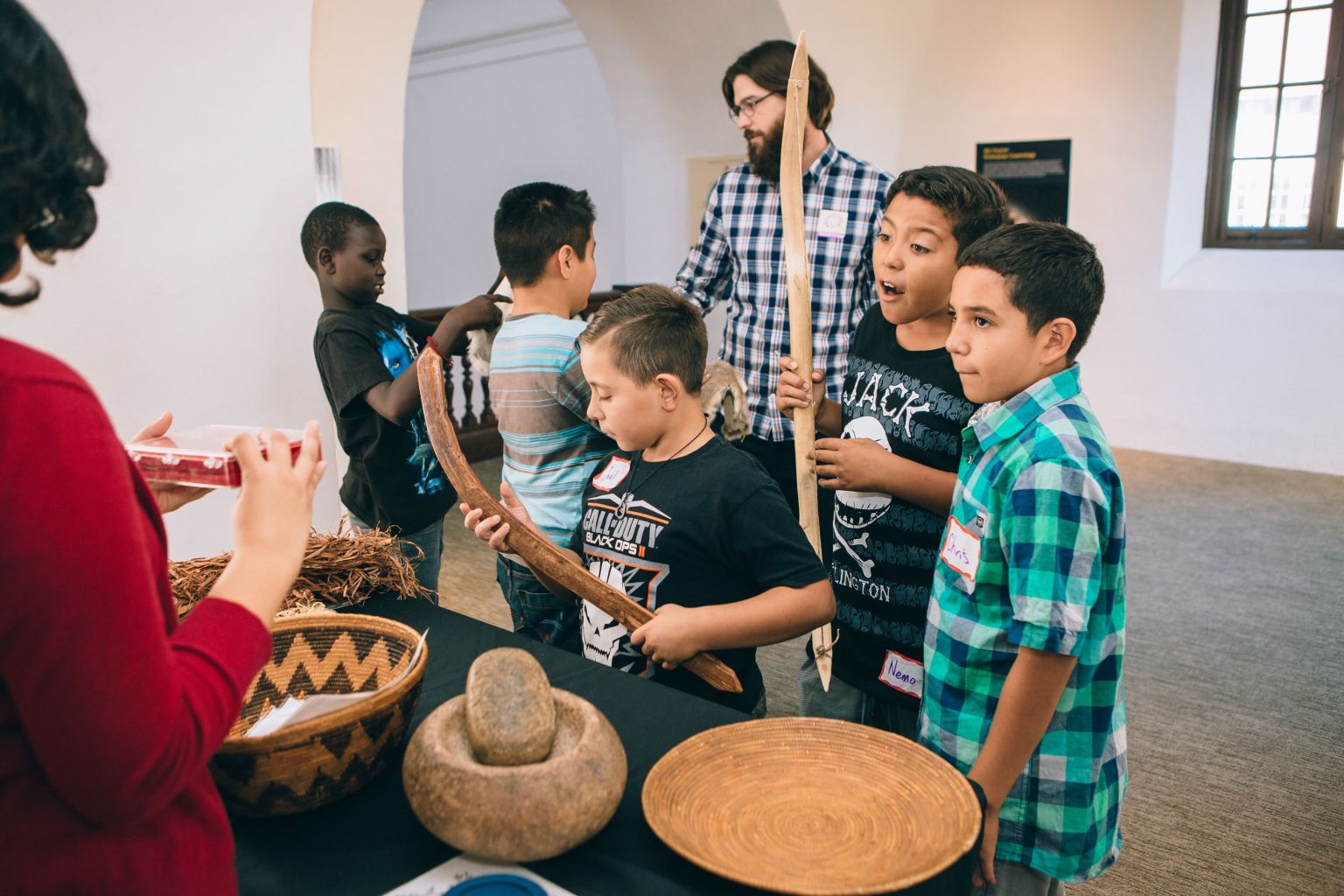
However, we no longer view the process of obtaining consent for holding Indigenous belongings as a task to check off our “to-do” list. Rather, it is our work moving forward. We will remain a museum that serves our community through explorations of ideas and issues that impact us all, providing a broader geographic and historical context for understanding them when appropriate. Our work internally to decolonize our practices will lead to new ideas and stories that we can present in programs and exhibitions.
In the end, we aim to transfer a collection of cultural items to the next generation of San Diegans and museum stewards that includes documented consent from source or descendant Indigenous communities for holding them. This work moves at the speed of repairing the world. It moves at the speed of ceding authority (and “seeding” authority, to quote our colleague Noelle Kahanu at the University of Hawai’i). It moves at the speed of trust.
Two Policies We Live By
The San Diego Museum of Man (SDMoM) has created two policies as part of its decolonizing practice.
Policy on Curating Ancestor Remains
Passed by the trustees and enacted in January 2017, SDMoM’s first decolonized policy was modeled on a similar one at the Denver Museum of Nature and Science in 2008. It recognizes that informed consent is the standard for all contemporary research practice when human subjects and human remains are involved. Our policy (and Denver’s) applies this standard retroactively to the museum’s ability to hold ancestor remains.
The policy reads in part:
“SDMoMwill only accession and/or curate human remains when express written permission is given to do so by the deceased individual, their next of kin, or an authorized designee of the descendant community.”
The museum is first addressing its responsibilities to US Indigenous communities under NAGPRA. In time, SDMoM will provide next of kin or descendant communities the opportunity to receive the more than 5,000 ancestors whose remains are housed in the museum.
The Colonial Pathways Policy
In June 2018, the trustees passed the Colonial Pathways Policy.
It reads in part:
“SDMoM will accession and/or curate Indigenous cultural resources only in instances where it has documented consent to do so from the Indigenous community, or when it can demonstrate that the cultural resource left an Indigenous community through a decolonized pathway….
SDMoM will establish a process for reviewing all the Indigenous cultural resources currently held at the Museum in consultation with descendant communities to determine their preference for disposition. Disposition might include ongoing stewardship at the Museum, return to the community (repatriation), or any other mutually determined outcome consistent with applicable law.”
SDMoM is dedicated to a continuous process of decolonization, and this policy commits our museum to opening and sustaining dialogues about the return of personal and/or communal belongings that left their Indigenous communities through unjust, colonial, or inequitable pathways.


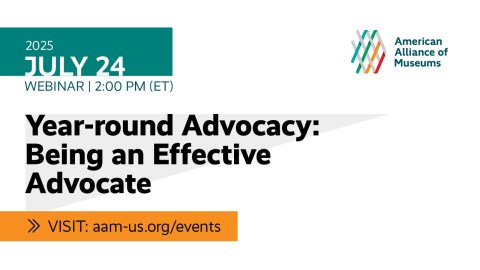





What a worthwhile ‘mind’ to cultivate regarding a legitimate museology! I pray you proceed with care from today’s thoughts to tomorrow’s deeds; as per the speed of real and timely repairs…
I also hope your example is vastly multiplied among the rest of the US institutions who (as of 1990, cited in the Encyclopedia Britannica) are believed to hold the physical remains of as many as 300,000 indigenous persons.
It is enough that you are intent to ethically reconcile what it is you may “hold” against what it is you must offer to the human community.